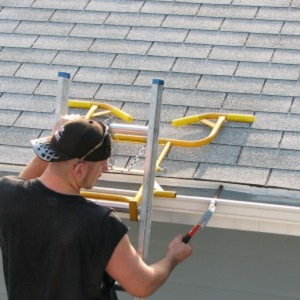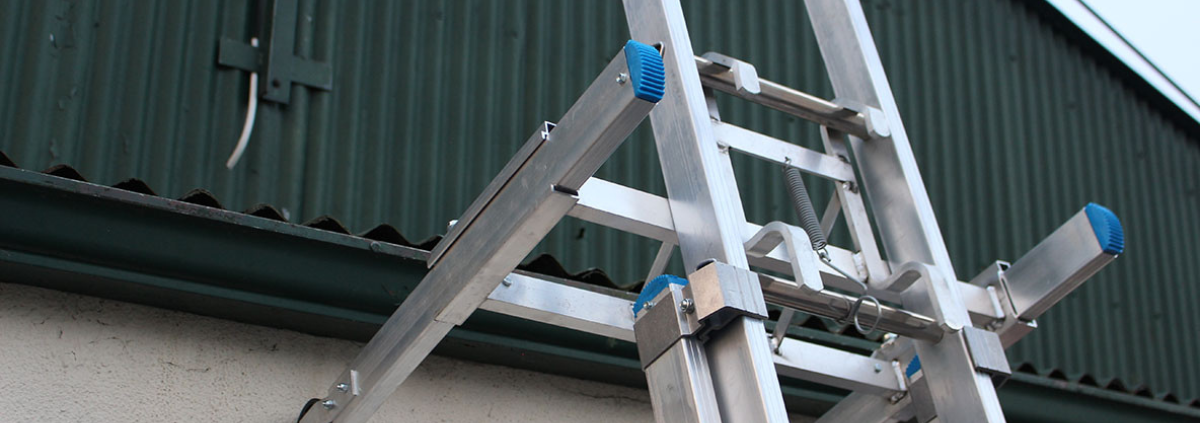How to Fit a Ladder Stand-Off in 5 Simple Steps
Working safely at height depends on how well your equipment is set up, and fitting a ladder stand-off correctly is one of the most important steps. A properly fitted stand-off keeps your ladder steady, balanced, and at the right distance from the wall, giving you the confidence to work efficiently and securely.
Whether you’re painting, cleaning gutters, or carrying out repairs, taking a few extra minutes to install the stand-off the right way ensures better stability and safety. In this guide, we’ll walk you through five simple steps to fit your ladder stand-off correctly and safely.
Step 1: Check Compatibility and Gather Your Tools
Start by confirming that your ladder stand-off matches your ladder’s rung design and width. Although most are universal, rung spacing can vary slightly between ladder models.
What to check before fitting:
- The ladder rungs are free from dirt or damage.
- The stand-off’s brackets align perfectly with the rungs.
- All bolts, pads, and locking clips are included.
Useful tools:
- Adjustable spanner or wrench
- Screwdriver
- Measuring tape
- Gloves for a firm grip
Having everything ready makes the fitting process smooth and safe.

Step 2: Position the Stand-Off Correctly on the Ladder
Lay the ladder flat on stable ground, rungs facing upwards. Place the stand-off near the top, ideally one or two rungs below the highest point. This gives you the best reach while maintaining balance.
If you’re using a V-shape model, the V section should face outward so it can clear gutters or corners while keeping your ladder centred and steady. To ensure balance, both stand-off arms must sit evenly on the ladder rails. The brackets should be perfectly straight not at an angle. This prevents the ladder from twisting once it’s upright.
Kirmell V-Shape Ladder Stand-Off is ideal for corner work, roof edges, and gutter cleaning.
Step 3: Secure the Brackets or Clamps Firmly
Most ladder stand-offs come with either spring-loaded clips or bolt-on clamps. Both methods work effectively if installed carefully.
If using clips:
- Line them up with the chosen rung.
- Press until they click securely into place.
- Test by tugging slightly, they shouldn’t move.
If using bolts:
- Hook the brackets over the rung.
- Slide bolts through and tighten evenly.
- Avoid overtightening to prevent surface damage.
Before standing the ladder upright, check both sides to confirm there’s no movement. A secure fit is key to preventing wobble when you climb.

Step 4: Test Alignment and Stability
Lift the ladder to an upright position and lean it against a firm surface. Ensure the stand-off rests evenly with both arms making contact.
If the ladder shifts or one arm doesn’t touch the surface evenly, lower it and realign. Proper alignment keeps your weight distributed evenly and prevents tipping.
For more practical guidance on preventing slips and ensuring secure balance, read the detailed guide on How Ladder Stand Offs Improve Safety When Working at Height.
Step 5: Perform a Final Safety Check
Before climbing, go through this quick safety checklist:
- The ladder’s base is stable and firm.
- The stand-off’s pads rest flat against the surface.
- All clamps or bolts are fully secured.
- No movement is felt when you apply slight pressure.
If everything feels solid, the ladder is ready for use. Always take the time to double-check; even experienced tradespeople should inspect before every climb. For more details, read How to Use Ladder Stand Off Safely.
Buy Kirmell Products with Confidence
When it comes to safety equipment, quality matters, at Kirmell, we manufacture ladder accessories built to the highest British standards, combining strength, precision, and lightweight aluminium design.
Our ladder stand-offs provide professional-grade stability for roofers, decorators, and maintenance crews. Every product undergoes strict quality control, ensuring you get reliable tools that last.
Shopping with Kirmell means you’re buying directly from a trusted UK manufacturer established since 1985, with a proven record of durability and safety performance. Explore our full collection of ladder accessories, clamps, and fittings, all designed to help you work safely at height.
Conclusion
Fitting a ladder stand-off isn’t complicated, but it requires care and attention to detail. By following these five simple steps, from positioning and securing to testing and inspecting, you can set up your ladder safely every time.
A properly fitted stand-off adds not only balance but also peace of mind while you work. Choose Kirmell’s reliable ladder stand-offs to get lasting stability, safety, and professional performance on every job.
FAQs
Do I need tools to fit a ladder stand-off?
Can I use a ladder stand-off for roof or gutter work?
How long does it take to fit a ladder stand-off?
Where can I buy a reliable ladder stand-off online?





